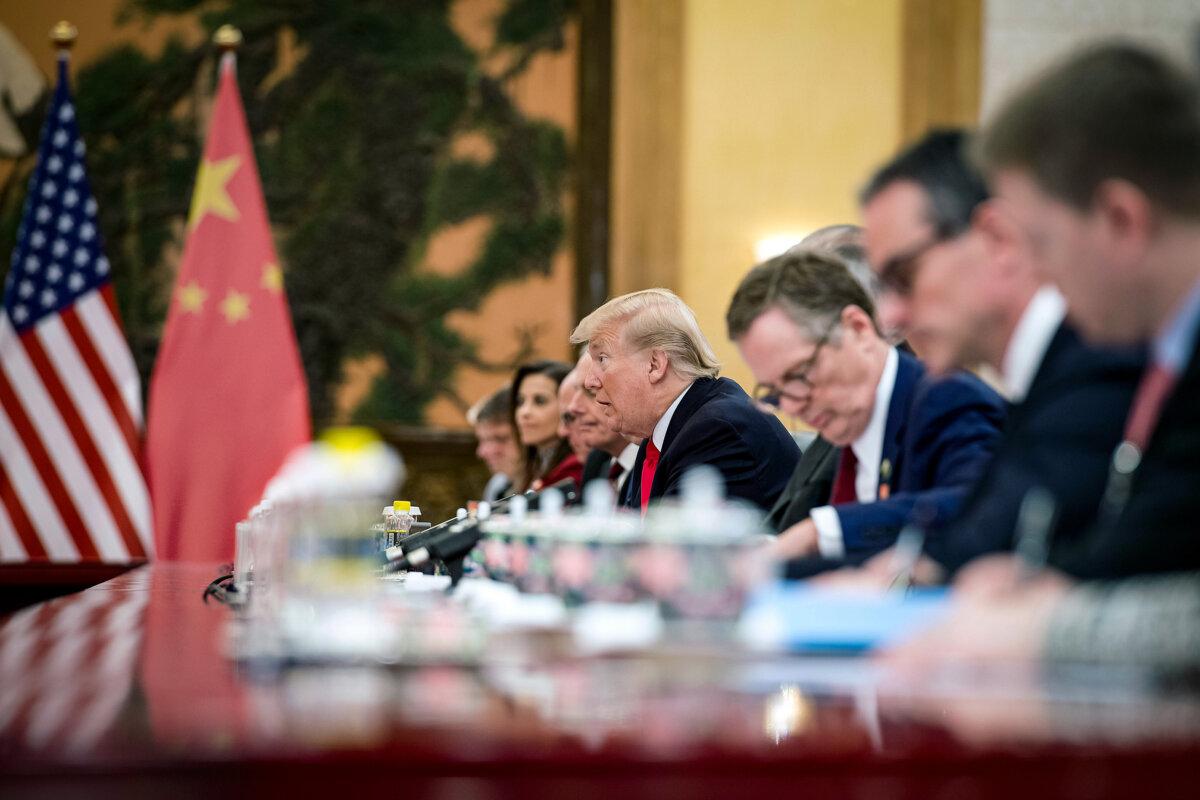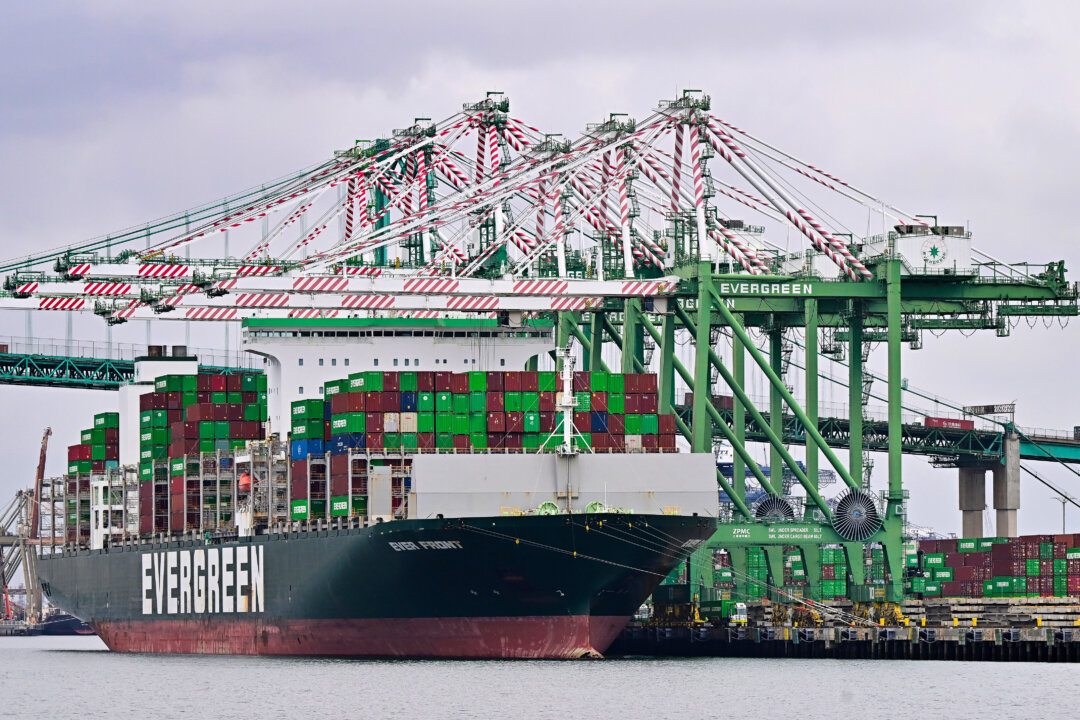‘I think they want the deal very badly,’ Trump said.
President Donald Trump signaled that he may speak with Chinese leader Xi Jinping at the end of the week, a further sign of progress in trade talks between the world’s two largest economies.
Following a weekend meeting in Switzerland, the United States and China have agreed to a 90-day tariff reduction, effective May 14.
As part of the deal, the White House will lower additional tariffs imposed on Chinese imports to 30 percent from 145 percent. China’s levies on U.S.-made goods will decrease to 10 percent from 125 percent.
According to Trump, as both sides exceeded expectations in trade discussions, China will also dismantle its non-tariff trade barriers.
Shortly after his April 2 tariffs announcement, Trump imposed a 145 percent tariff rate on goods coming from China. This prompted the Chinese regime to retaliate with 125 percent levies on U.S.-made products entering the country. Beijing also implemented other non-tariff measures, such as prohibiting Chinese firms from exporting dual-use items to the United States and adding several businesses to its “Unreliable Entity List.”
Speaking to reporters from the White House on May 12, Trump highlighted that China “agreed to open” its market and said it was “maybe the most important thing” to come out of the Geneva discussions.
The president said that the agreement has not been finalized.
“We have to get it papered,” he said. “But they’ve agreed to open up China.”
Despite the tariff escalation over the past couple of months, Trump reiterated that U.S.–China relations are “very good” and that his administration is “not looking to hurt China.”
“China was being hurt very badly, and they were closing up factories. They were having a lot of unrest. Then they were very happy to be able to do something with us. And the relationship is very, very good,” Trump said.
He said he would speak with Xi, “maybe at the end of the week.”
U.S. officials plan to meet their Chinese counterparts “in the next few weeks” and “will avoid the upward tariff pressure,” Bessent confirmed.
“We have a process now. We have a meeting mechanism. We loosely christened it the ‘Geneva Mechanism,’” Bessent said in an interview with CNBC’s “Squawk Box.”
“I would imagine that in the next few weeks, we will be meeting again to get rolling on a more fulsome agreement.”
In a separate interview with Bloomberg TV, Bessent revealed that the previous administration did not enforce the Phase One trade agreement provisions established during Trump’s first term.
“We had an excellent trade agreement with China—and the Biden administration chose not to enforce it. The Chinese delegation basically told us that once President Biden came into office, they just ignored their obligations,” he said.
When asked whether he is concerned Beijing will follow through, Trump said he believes the regime will.
“I think they want the deal very badly,” the president stated.
Strategic Decoupling
Since the coronavirus pandemic, economists and policymakers have discussed the possibility of the United States embarking upon decoupling policies with China—reducing economic dependence on the world’s second-largest economy.
While the previous administration shot down policies that resembled decoupling, Bessent said that the United States wants to champion strategic decoupling.
“We do not want a generalized decoupling from China, but what we do want is a decoupling for strategic necessities,” the Cabinet secretary told CNBC.

This plan would concentrate on ensuring resilient supply chains by protecting, for example, the domestic steel industry.
“We are doing that, and the reciprocal tariffs have nothing to do with the specific industry tariffs,” he added.
Bessent’s predecessor, Janet Yellen, led an initiative to “de-risk” from China, noting that decoupling would be “disastrous” to both the U.S. and global economies.
“While we surely have concerns that need to be addressed, decoupling would be a big mistake,” Yellen said at a House Financial Services Committee hearing in June 2023, adding that U.S. consumers “benefit greatly” from purchasing cheaper Chinese-made goods.
In recent years, the U.S. government has adopted an economic approach toward the Indo-Pacific. This strategy is meant to bolster American influence and curtail China’s regional involvement.
Limiting American economic dependence on China would be a long-term plan, as the United States imports approximately $440 billion in goods annually.
Beats Expectations
Weeks prior to the May 10 meeting, the president encouraged the Chinese leaders to reach out to begin discussions, stating that the “ball is in China’s court.”
When U.S.–China talks were announced in Switzerland, both sides disputed how the meeting originated.
Chinese Foreign Ministry spokesman Lin Jian said on social media platform X last week that the meeting “was requested by the U.S. side.”
Trump told the press that this was wrong information.
“They said we initiated? Well, I think they ought to go back and study their files, OK?” the president told reporters at a White House event on May 7.
Before the meeting, the president proposed lowering levies on China.
An “80 percent Tariff on China seems right! Up to Scott B,” Trump said in a May 9 Truth Social post.
Based on comments from Bessent and Trade Representative Jamieson Greer, the outcome appeared to exceed expectations.
According to the Treasury secretary, the weekend’s meeting was more about de-escalation than establishing a large trade agreement.
“But we’ve got to de-escalate before we can move forward,” Bessent said in an interview with Fox News.
Greer also told CNBC’s “Power Lunch” that the talks would lead to “stability” and a “foundation for something more.”
In the end, the meeting surprised the financial markets, which had been at a standstill to finish the trading week on May 9.
“No one had these low China tariff rates on their bingo cards. This is a big positive surprise,” Jeff Buchbinder, chief equity strategist for LPL Financial, said in a note emailed to The Epoch Times.
Owen Evans contributed to this story.

